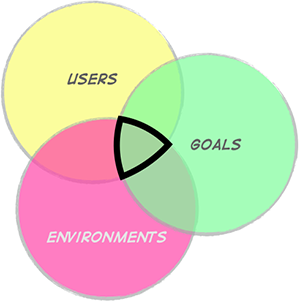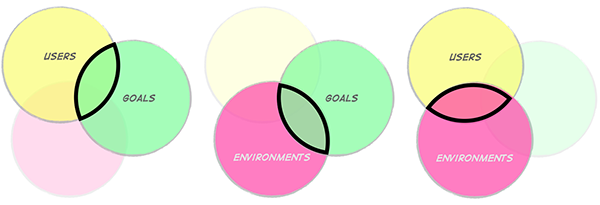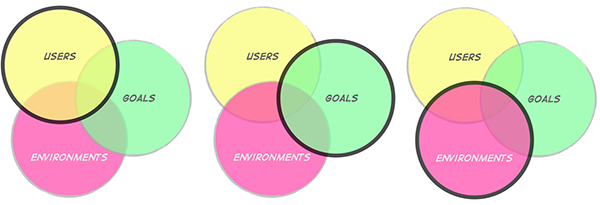UX Certification
Get hands-on practice in all the key areas of UX and prepare for the BCS Foundation Certificate.


Desk research is another name for secondary research. Broadly speaking, there are two types of research activity: primary research (where you go out and discover stuff yourself); and secondary research (where you review what other people have done). Desk research is not about collecting data. Instead, your role as a user researcher carrying out desk research is to review previous research findings to gain a broad understanding of the field.
Before carrying out a field visit, developing a prototype, running a usability test, or embarking on any project that you want to be user centred, it makes sense to see what people have done in the past that relates to the product’s domain. Although it’s unlikely that anyone has carried out the exact research activity you’re planning, someone has almost certainly tried to answer related questions. Reviewing this research is the quickest and cheapest way to understand the domain.
Carrying out desk research is a critical first step, for at least three reasons:
At this point, I’ve had many user researchers tell me that they’re working on a bleeding edge design project so there isn’t any desk research to do. There’s a common misconception that no research exists.
In my experience, there is almost always something you can build upon. Here’s an approach I take to go about finding it. It helps me stay focussed but also makes sure that I remember to check all the possible nooks and crannies where relevant research findings may be hiding.

A Venn diagram showing users, goals and environments. Where these three overlap is the sweet spot for user research.
The Venn diagram describes the context of use: your users, their goals and the environments where the action occurs. The best kind of research is where all three of these dimensions overlap: field visits that focus on your users trying to achieve their goals in context. This kind of research is so specific and relevant to your project that it may be hard to find, so don’t get discouraged if you can’t turn anything up in this area.

This set of Venn diagrams shows that research into the overlap between users and goals, environments and goals and users and envrionments can also yield useful insights.
But there is potentially useful research in the other areas of overlap on our Venn diagram. This falls into three broad areas:
The most likely place you’ll find this kind of research is within your own organisation. But you need to be prepared to dig. This is because research findings, especially on agile projects, are often treated as throw-away by-products that apply to a specific project. The findings aren’t shared outside the design team but typically make a fleeting appearance on a research wall or end up buried in someone’s email inbox. Even when research findings are written down, and even when the report is archived somewhere, people typically don’t know how to go about finding it. Organisations are generally poor at creating a shared repository of knowledge and rarely teach staff how to use the intranet or where past reports might be located. The result of these obstacles is that companies waste time and money either doing research that already exists or asking the wrong research questions.
So within your organisation, you should:

In almost every project, you'll find some research that exists into users, goals and environments. This may not be directly relevant to your specific research questions but it will help you become knowledgeable about the domain.
Once you’ve covered the areas of overlap, your next step is to look for more generic information about your users, the environment in which they’ll use the system, and the kinds of goals your system will support.
In this step, you’ll find it useful to:
Judging the quality of research is a whole article in itself. Fortunately, Philip Hodgson’s guidelines for reviewing consumer research reports has it covered.
There’s just one thing I’d add to Philip’s guidelines. Beware of dismissing research just because it was done a few years ago. People new to research often make the mistake of viewing research reports like so many yogurts in a fridge where the sell-by dates have expired. Just because it was done a couple of years ago, don’t think it’s no longer relevant. The best research tends to focus on human behaviour, and that tends to change very slowly.
Find out more on our 3-day, user experience immersion seminar.

Dr. David Travis (@userfocus) has been carrying out ethnographic field research and running product usability tests since 1989. He has published three books on user experience including Think Like a UX Researcher. If you like his articles, you might enjoy his free online user experience course.

Gain hands-on practice in all the key areas of UX while you prepare for the BCS Foundation Certificate in User Experience. More details

This article is tagged strategy.
Our most recent videos
Our most recent articles
Let us help you create great customer experiences.
We run regular training courses in usability and UX.
Join our community of UX professionals who get their user experience training from Userfocus. See our curriculum.
copyright © Userfocus 2021.
Get hands-on practice in all the key areas of UX and prepare for the BCS Foundation Certificate.
We can tailor our user research and design courses to address the specific issues facing your development team.
Users don't always know what they want and their opinions can be unreliable — so we help you get behind your users' behaviour.